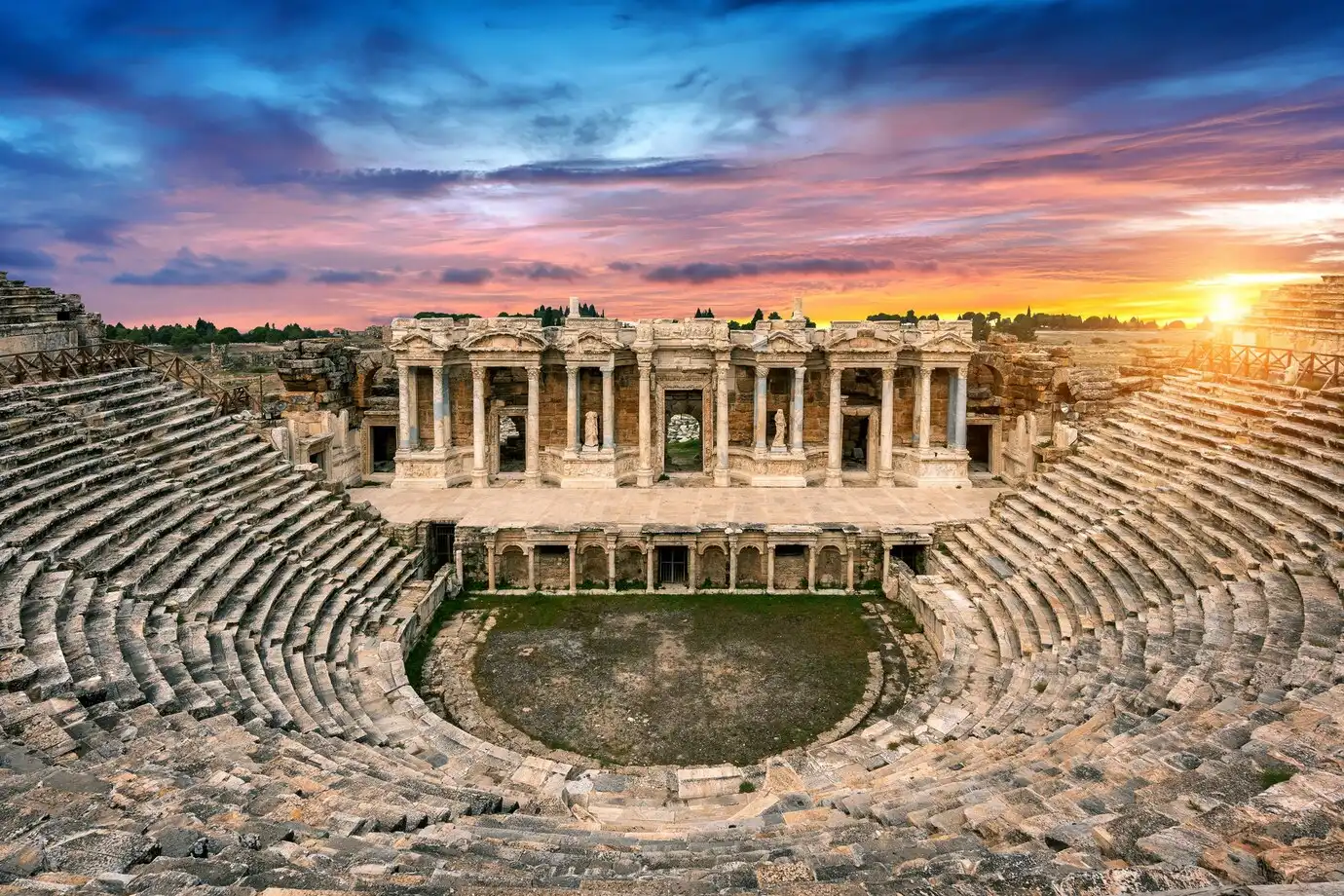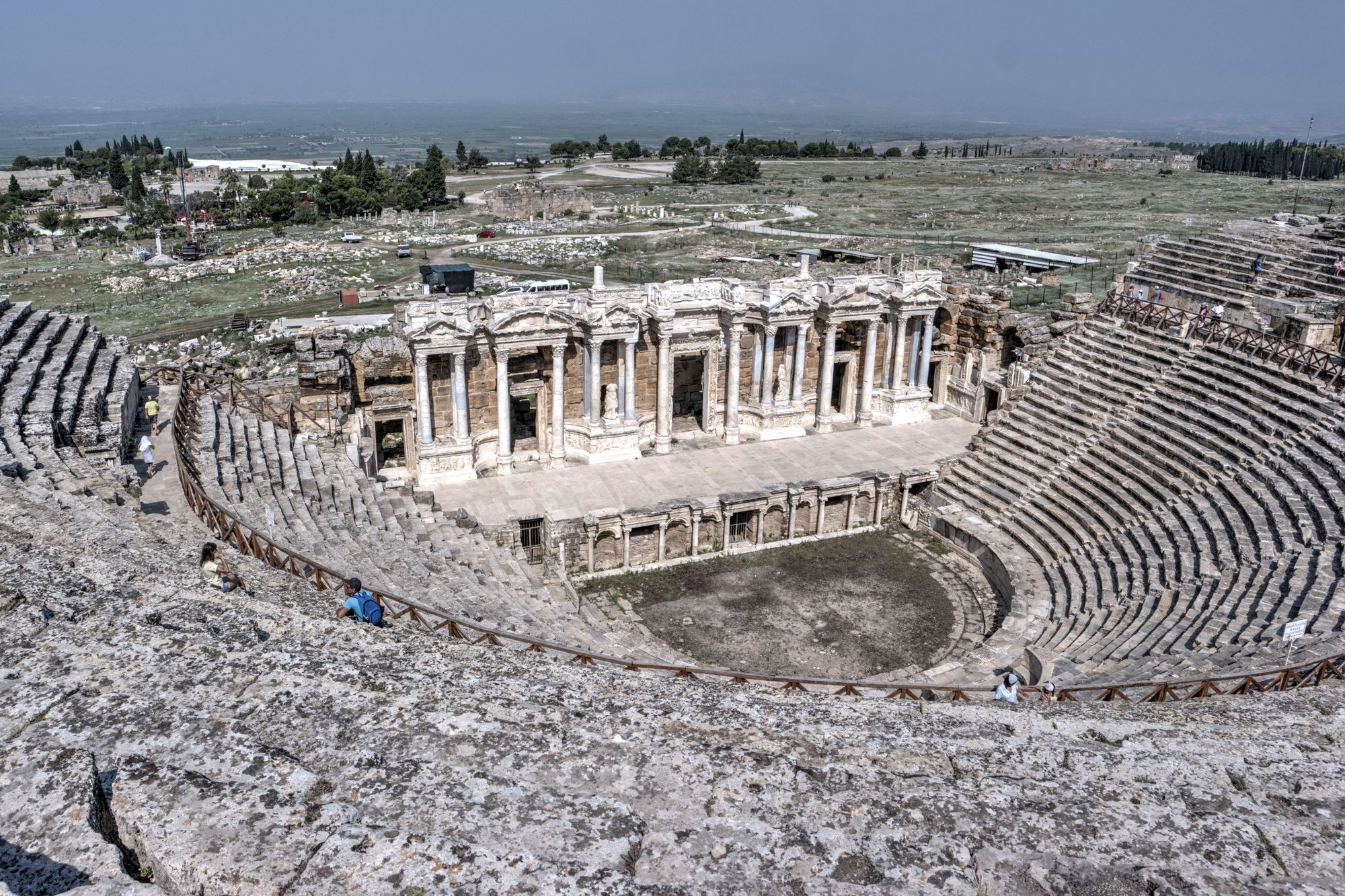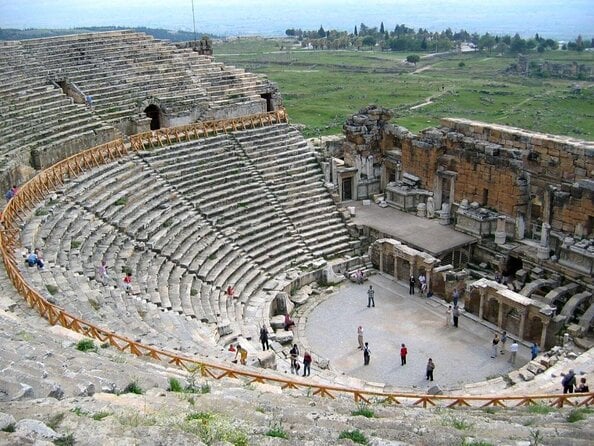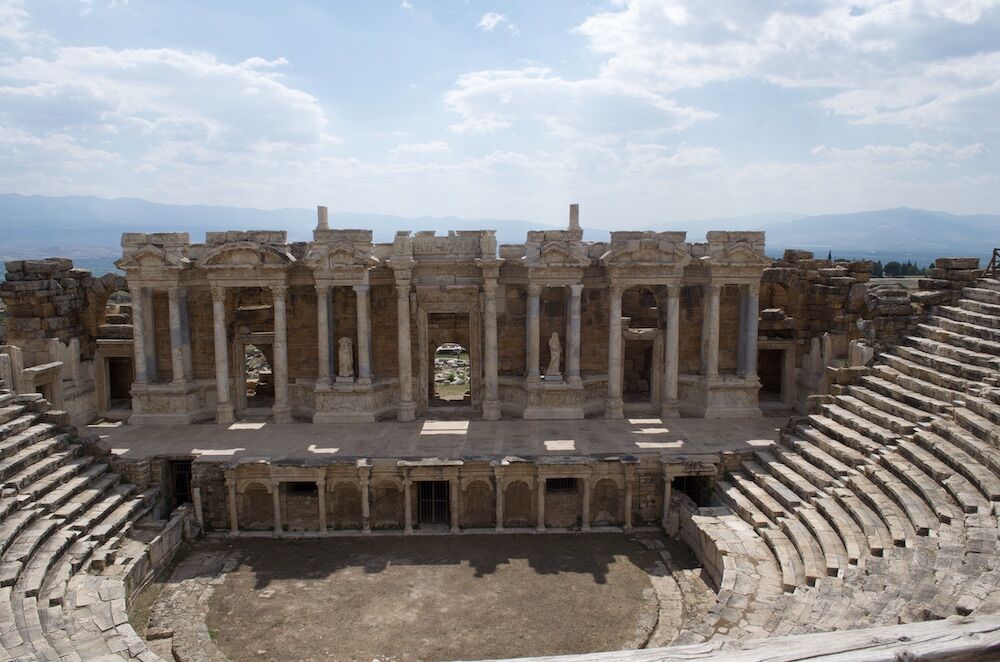The Hierapolis Amphitheater in Pamukkale, Turkey, stands as an enduring testament to the engineering genius and artistic refinement of the Roman Empire. Constructed in the 2nd century CE under Emperor Hadrian, the theater replaced a prior structure that was destroyed during the catastrophic earthquake of 60 CE. Later, the amphitheater was renovated and richly embellished under the rule of Septimius Severus (193–211 CE), cementing its status as a cultural jewel of the Roman world.
Architectural Brilliance and Capacity
This amphitheater boasts 50 rows of tiered seating, meticulously carved from local limestone, which accommodated between 12,000 to 15,000 spectators. The theater’s design demonstrates advanced urban planning, with the seating arranged in a semi-circular configuration to optimize both visibility and acoustics. A prominent feature of its construction is the scaenae frons (stage building), which is adorned with intricately carved mythological friezes, statues, and reliefs, narrating stories from Roman and Greek mythology.

The amphitheater also includes finely preserved vomitoria, corridors and passageways allowing efficient crowd dispersal. These architectural details reflect not only aesthetic considerations but also practical engineering solutions.
Purpose and Significance
The Hierapolis Amphitheater served as a venue for a variety of events, including dramatic performances, gladiatorial games, and ceremonial gatherings. Its dual function as an entertainment hub and a space for civic engagement underscores its importance in the socio-cultural fabric of ancient Hierapolis. The inclusion of mythological imagery in its decoration may have symbolized the empire’s ideological and religious narratives, reinforcing the Roman worldview.

Acoustics and Engineering Prowess
The amphitheater’s exceptional acoustics are a testament to Roman mastery over sound dynamics. Positioned on a natural hillside, the structure leverages the slope to enhance sound projection, ensuring that performances could be clearly heard by all attendees. This acoustic design remains a point of fascination for modern architects and engineers.

Context within the Hierapolis-Pamukkale Site
Hierapolis, a city renowned for its thermal springs, was a significant center of Greco-Roman culture. The UNESCO World Heritage Site designation of Pamukkale and Hierapolis reflects their combined historical, cultural, and natural significance. Visitors to the amphitheater are treated to breathtaking views of the surrounding travertine terraces, making it a compelling attraction for both history enthusiasts and tourists.

Legacy and Modern-Day Appeal
Today, the Hierapolis Amphitheater is celebrated not only as a masterpiece of Roman architecture but also as a symbol of the empire’s cultural influence in Anatolia. Its preservation provides invaluable insights into ancient entertainment, religious practices, and engineering techniques. As part of ongoing archaeological research and conservation, the site continues to reveal new dimensions of ancient life.
For those intrigued by the grandeur of antiquity, the Hierapolis Amphitheater offers an immersive journey into the artistic and architectural zenith of the Roman Empire.

